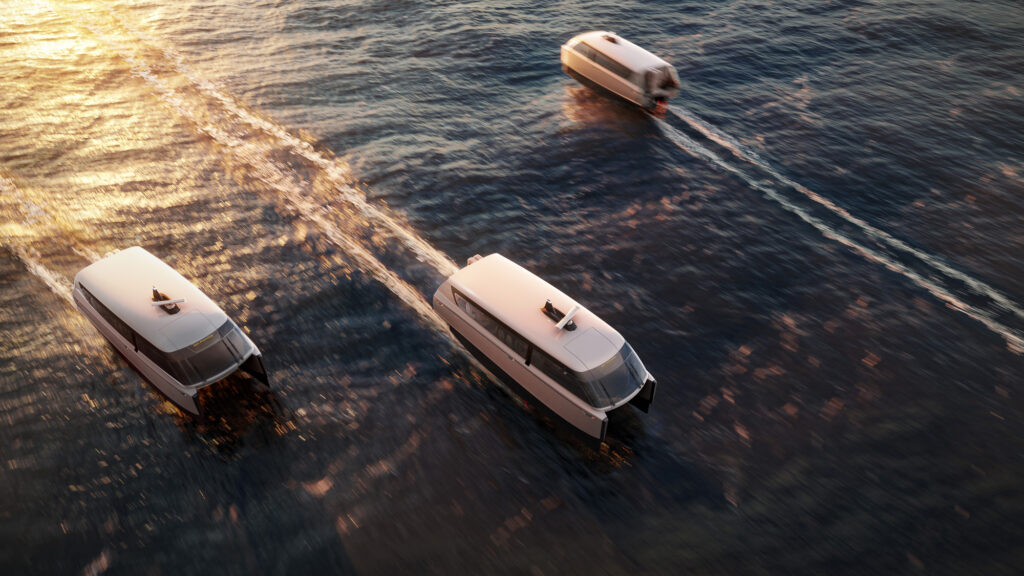
Once upon a time, the storied Mosquito Fleet buzzed about the Puget Sound, ferrying passengers and goods to and fro. Today, a buzzy European company—Candela, makers of the sleek C-8 electric hydrofoil boat—is looking to emulate that same model with an all-new electric ferry that, they say, could help make the commuting lifestyle much more efficient.
“Most transportation here was originally done by boats. Then land-based transport took over because it was faster and cheaper,” explains Candela CEO Gustav Hasselskog. “Now we’re changing all that again.”
That change comes in the form of a zippy hydrofoil ferry known as the P-12. Featuring wings slung under the hull that cut energy usage by 80 percent compared to conventional vessels, the shuttle also produces no wake, making it eligible for exemptions from speed limits, as demonstrated in Candela’s hometown of Stockholm, where the model is currently running as a test program. (There, the P-12 ferry is set to reduce rush hour commute times from 50 minutes by car to 25 minutes by foiling ferry.) The hydrofoil tech helps provide a smooth and efficient ride at speeds of 30 knots, while the vessel is stabilized by a flight control computer system that uses sensors to scan the surface ahead and adjust the hydrofoils’ angles in real-time, accounting for waves and wind. “It’s a magic carpet ride. It’s incredibly quiet and smooth, more akin to a sailplane than anything else, says Hasselskog. “Once you’ve tried it, it’s hard to go back to traditional boating.”
In Seattle, the company says the efficiency of the P-12 Shuttle could make the Seattle-Bainbridge Island commute up to ten minutes faster than current options. It could also pave the way for new routes like a direct link to Magnolia or West Seattle, which could be completed in just 13 minutes and offer up to 15 departures within a 12-hour period.
With capacity for 30 seated passengers in addition to space for bikes or wheelchairs, the P-12 uses the same amount of energy per passenger as a hybrid electric bus—and in fact, Candela envisions a system for waterborne transport that’s similar to a bus line. “Replacing a few larger vessels with a flexible fleet of many smaller ones results in a waterborne transport system with more frequent departures. This offers more direct lines and introduces new routes that don’t currently exist,” says Hasselskog.
The brand demonstrated their hydrofoil tech to press and media during a stateside visit in September in hopes of garnering more attention to the idea; time will tell if their vision for a modernized and electrified ferry fleet comes to pass. At the very least, the idea seems to have merit; Navier, a U.S.-based competitor in the hydrofoil space, also demonstrated their e-ferry concept to interested city leaders in Des Moines, Washington, just last month. For more details on the P-12, go to: candela.com/p-12-shuttle/.


